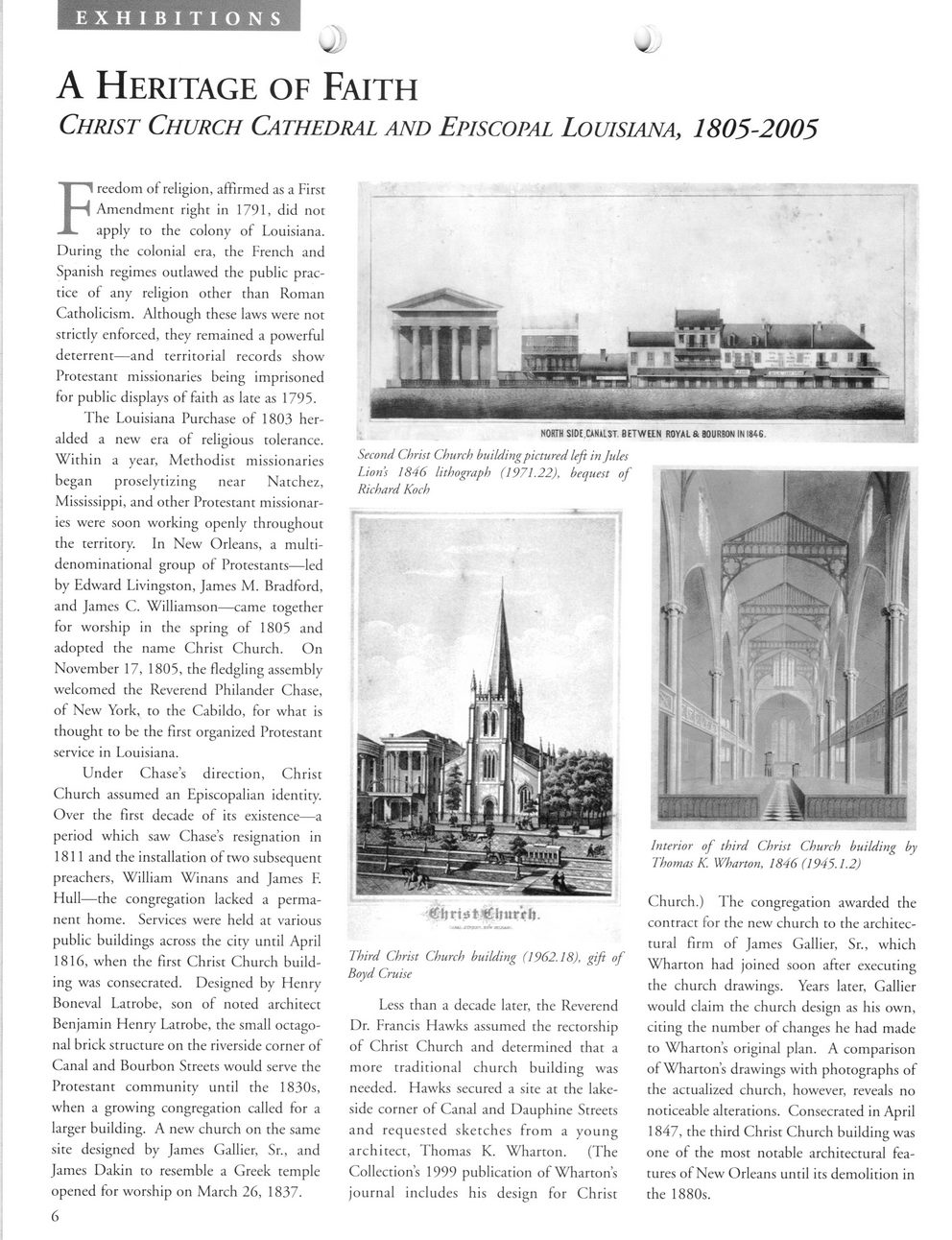This text was obtained via automated optical character recognition.
It has not been edited and may therefore contain several errors.
EXHIBITIONS N. v. A Heritage of Faith Christ Church Cathedral and Episcopal Louisiana,, 1805-2005 Freedom of religion, affirmed as a First Amendment right in 1791, did not apply to the colony of Louisiana. During the colonial era, the French and Spanish regimes outlawed the public practice of any religion other than Roman Catholicism. Although these laws were not strictly enforced, they remained a powerful deterrent?and territorial records show Protestant missionaries being imprisoned for public displays of faith as late as 1795. The Louisiana Purchase of 1803 heralded a new era of religious tolerance. Within a year, Methodist missionaries began proselytizing near Natchez, Mississippi, and other Protestant missionaries were soon working openly throughout the territory. In New Orleans, a multi-denominational group of Protestants?led by Edward Livingston, James M. Bradford, and James C. Williamson?came together for worship in the spring of 1805 and adopted the name Christ Church. On November 17, 1805, the fledgling assembly welcomed the Reverend Philander Chase, of New York, to the Cabildo, for what is thought to be the first organized Protestant service in Louisiana. Under Chase?s direction, Christ Church assumed an Episcopalian identity. Over the first decade of its existence?a period which saw Chase?s resignation in 1811 and the installation of two subsequent preachers, William Winans and James F. Hull?the congregation lacked a permanent home. Services were held at various public buildings across the city until April 1816, when the first Christ Church building was consecrated. Designed by Henry Boneval Latrobe, son of noted architect Benjamin Henry Latrobe, the small octagonal brick structure on the riverside corner of Canal and Bourbon Streets would serve the Protestant community until the 1830s, when a growing congregation called for a larger building. A new church on the same site designed by James Gallier, Sr., and James Dakin to resemble a Greek temple opened for worship on March 26, 1837. 6 NORTH SIDE.CANiLST BETWEEN ROYAL & BOURBON IN 1846. Second Christ Church building pictured left in Jules Lion's 1846 lithograph (1971.22), bequest of Richard Koch CltriattClturVli. Third Christ Church building (1962.18), gift of Boyd Cruise Less than a decade later, the Reverend Dr. Francis Hawks assumed the rectorship of Christ Church and determined that a more traditional church building was needed. Hawks secured a site at the lakeside corner of Canal and Dauphine Streets and requested sketches from a young architect, Thomas K. Wharton. (The Collection?s 1999 publication of Wharton?s journal includes his design for Christ Interior of third Christ Church building by Thomas K. Wharton, 1846 (1945.1.2) Church.) The congregation awarded the contract for the new church to the architectural firm of James Gallier, Sr., which Wharton had joined soon after executing the church drawings. Years later, Gallier would claim the church design as his own, citing the number of changes he had made to Wharton?s original plan. A comparison of Wharton?s drawings with photographs of the actualized church, however, reveals no noticeable alterations. Consecrated in April 1847, the third Christ Church building was one of the most notable architectural features of New Orleans until its demolition in the 1880s.

Battle of 1814 1